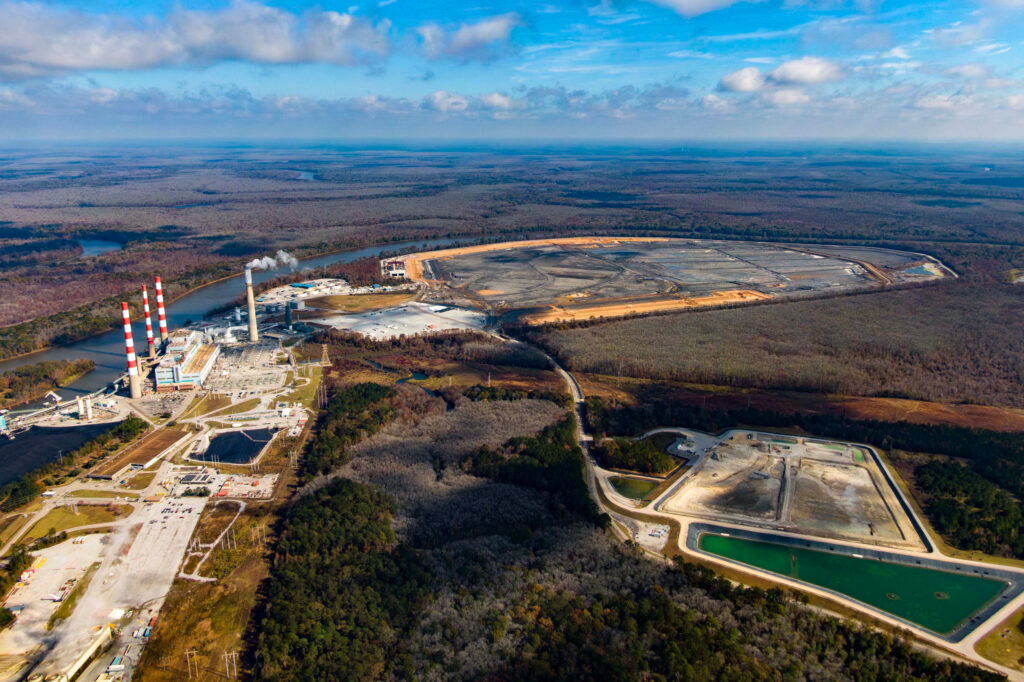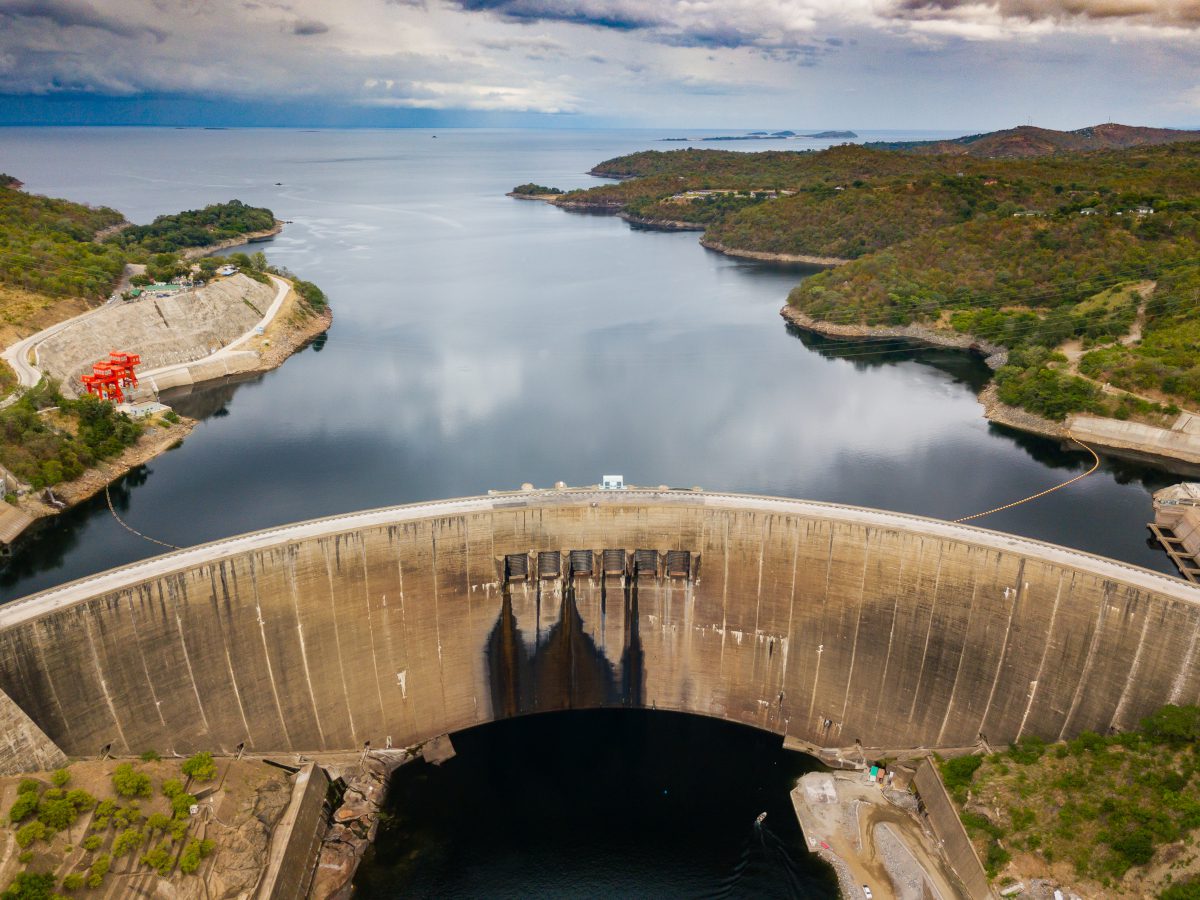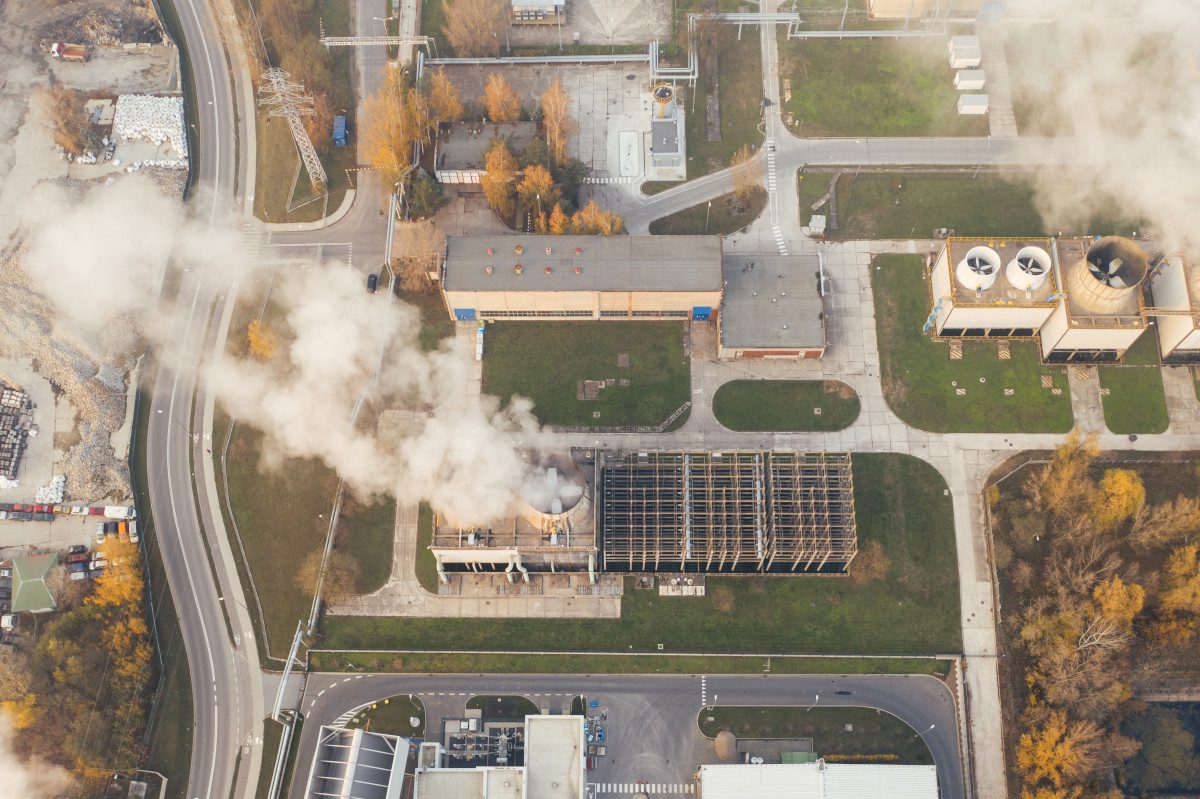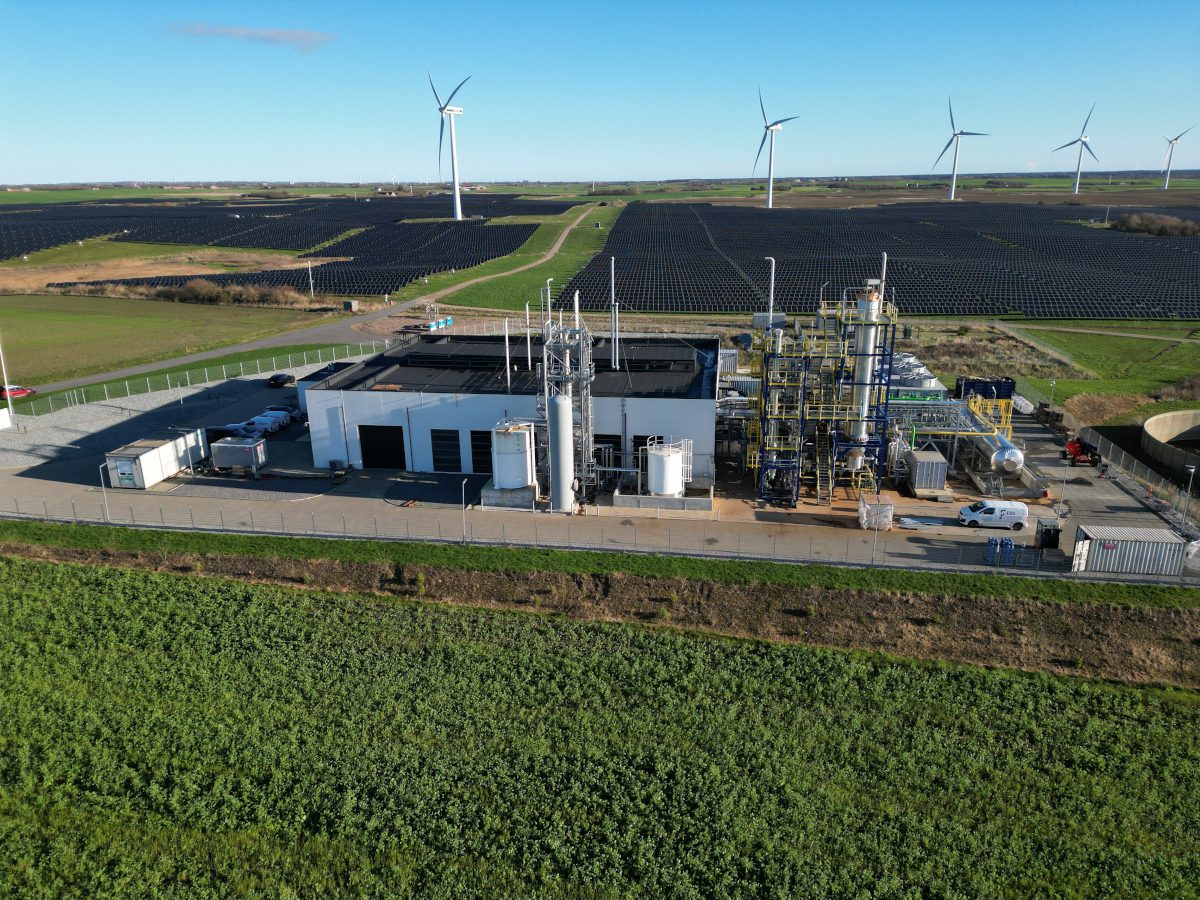When thousands of gallons of diesel fuel spilled into Baltimore’s Inner Harbor from Johns Hopkins Hospital on June 4, it didn’t just contaminate the waterfront and threaten aquatic habitat. It also cast a spotlight on a deeper, largely overlooked problem: Maryland’s continued dependence on fossil-fueled backup generators.
Hospitals, research campuses and critical infrastructure like data centers across the state rely on diesel and natural gas-powered generators for emergency backup. Yet these systems remain largely unaccounted for in Maryland’s decarbonization and emissions reduction plans, despite emitting significant quantities of greenhouse gases—especially when used in demand-response situations or during extended outages.
Under federal rules, diesel generators can operate up to 50 hours per year for non-emergency purposes like demand response. Stricter pollution controls are triggered if backup generators run beyond that federal cap, which experts say undermines air quality protections.
While the state is committed to an ambitious clean energy transition, officials acknowledge that unlike with supply-side systems, which are subject to real-time monitoring, they don’t actually know how many of these generators exist or how much carbon, methane or particulate pollution these backup systems release annually.
“There’s no statewide audit that has been done yet to quantify backup generator usage,” said Maryland Energy Administration Director Paul Pinsky in an interview with Inside Climate News. He emphasized that such systems are used infrequently, “often once or twice a year,” but conceded they’re effectively invisible in Maryland’s climate accounting and energy planning.
The state’s limited resources force leaders to prioritize areas with higher emissions impact, Pinsky said, like building electrification and utility-scale renewables. “We want to get away from fossil fuels. But we’re trying to focus where we get the best return on investment,” he said.
The issue, however, is bigger than presumed. Backup generators, many of them diesel-fueled, are not only used for emergency power but increasingly tapped for grid-support roles through demand response programs. When deployed during peak usage periods, their emissions spike.
“If they’re being used during peak times and not just emergencies,” Pinsky admitted, “that changes the complexion of the question.”
Energy analysts say the scale of the issue is significant. And with a wave of hyperscale data centers slated for construction in Maryland and Virginia, which would be accompanied by fleets of fossil-fueled backup generators, the associated emissions and public health concerns are poised to grow substantially.
Maryland’s climate accounting system is largely silent on fossil-fueled backup generators because “this type of data is not systematically tracked in real-time,” said Matthew Hoyt, a principal at Exeter Associates, an energy consulting firm. He said that emissions from these systems, many of which power hospitals, university buildings and increasingly, data centers, are estimated at the permitting stage and “controlled” by runtime limits. But those estimates rarely reflect real-world operation or demand response events, which activate generators outside of emergencies, permitted under carve-outs with minimal oversight.
Despite their inconsistent use, the cumulative emissions footprint of these generators is thought to be much higher. “If we assume an average 1 MW diesel generator running close to its [permitted] cap [of] 100 hours a year, then annual CO2 emissions per unit is around 123.75 metric tons,” Hoyt said.
That figure may seem small in isolation, but when scaled up, the problem becomes significant. “If we thought the number of schools, hospitals, fire stations, etc. justified 10,000 backup generators, you’d be in the right ballpark to say it’s a significant impact,” he said.
The state’s growing attraction for data center buildout has heightened existing environmental concerns. “One of the reasons [data center oversight] bills passed in the first place is because the impacts of data centers on a variety of things—water, land use, emissions, etc.—are not entirely understood,” Hoyt said. But earlier this year, Maryland Gov. Wes Moore vetoed SB116, which would have required an environmental impact review for data centers; Gov. Glenn Youngkin vetoed similar legislation in Virginia. Hoyt cited these actions as evidence of political reluctance to confront the issue.
Dr. K. Max Zhang, a professor of engineering at Cornell University and expert in air pollution and energy systems, said diesel backup generators can have an outsized environmental impact despite their limited power contribution.
“Even though diesel backup generators do not supply much power, they disproportionately contribute to NOx emissions when atmospheric conditions are most conducive to ozone formation i.e., hot summer days,” Zhang said. He pointed to research showing that the emission factors of these generators are comparable to the most polluting combustion turbines, particularly during high-demand periods.
Zhang emphasized that allowing diesel generators to participate in demand response programs without oversight risks worsening air quality when it’s already most vulnerable. “We argue that, if diesel backup generators are allowed to participate in demand response programs, they should meet strict emission standards,” he said.
He also flagged the potential for localized air pollution spikes. “Diesel backup generators could contribute to high ground-level particulate matter concentrations—creating PM hotspots—if their stacks are not sited properly,” Zhang said. He urged that stack placement be carefully evaluated based on surrounding land use and community proximity, especially for generators used in demand response roles.
In the absence of a statewide emissions inventory for fossil backup generators, several key studies offer insight into the scale and impact of these systems—and the policy gaps that accompany them.
A 2014 report by the Northeast States for Coordinated Air Use Management provided a comprehensive regional assessment of diesel backup generators in the northeast. NESCAUM consists of Connecticut, Maine, Massachusetts, New Hampshire, Rhode Island, Vermont, New Jersey and New York. Maryland, though not a NESCAUM member, is part of the broader PJM Interconnection grid and shares similar climate and energy challenges.
This story is funded by readers like you.
Our nonprofit newsroom provides award-winning climate coverage free of charge and advertising. We rely on donations from readers like you to keep going. Please donate now to support our work.
Donate Now
The report estimated well over 30,000 units across the states with a combined capacity of more than 10 GW. Without pointing to Maryland or PJM, the report found that backup generators, most of them classified for emergency use only, were increasingly participating in demand response programs. The report did not quantify how often this happened or point to how many of these systems ran for longer than allowed under federal pollution standards.
The study also modeled emissions from these generators, including nitrogen oxides, particulate matter and volatile organic compounds. It found that when these generators are deployed, often during peak grid events, the resulting local air pollution can create short-term “hotspots,” with pollutant concentrations in urban areas sometimes exceeding health-based thresholds. The report called for stronger oversight, including full registration, emissions reporting and phased retirement of fossil-powered backup systems.
Maryland’s own Building Energy Performance Standards Technical Support Document, presented by the Department of the Environment in 2024 provides clearer evidence that continued reliance on on-site fossil systems—including backup generators—risks undermining the state’s decarbonization targets.
While the document doesn’t isolate generator emissions, its modeled scenarios show that buildings with fossil fuel-powered backup systems have considerably higher greenhouse gas emissions than fully electrified ones. The analysis makes clear that this continued reliance is at odds with Maryland’s statutory mandate to reduce direct building emissions by 20 percent by 2030 and transition toward net-zero.
A third report, commissioned by the Maryland Department of the Environment and conducted by the Johns Hopkins University Sustainable Energy Institute in 2024, found that diesel backup generators were necessary only during prolonged outages that threaten safety but called them temporary tools. It stated that falling battery costs will make cleaner alternatives more viable, noting that refueling challenges and high emissions make diesel unsuitable for long-term resilience planning.
The report underscores the need to align resilience investments with decarbonization goals and highlights the importance of incentives for battery storage and microgrids, rather than continued reliance on diesel backup.
Despite these explicit recommendations, Maryland’s newly adopted Building Energy Performance Standards law carves out major exemptions for entire building sectors such as hospitals and manufacturing facilities. As a result, the state’s largest fossil-powered backup users are effectively shielded from having to decarbonize. Without mandates or incentives, advocates say, institutions have little reason to transition to battery storage, hybrid microgrids or cleaner alternatives like fuel cells.
In a statement, an MDE spokesperson said its building standards aim to promote cleaner backup systems like battery storage and hybrid microgrids and reduce the risk of pollution. But environmental advocates argue that without clear monitoring and enforcement, these goals remain on paper.
Johns Hopkins Hospital, the source of last month’s diesel spill, declined to say whether it plans to retire or replace its diesel infrastructure. A hospital spokesperson said only that “a thorough review of the diesel fuel overflow incident is ongoing.”
Environmental advocates say the state and private institutions are equally responsible for tracking pollution and ensuring public health.
“The more real-time data we acquire on emissions and exposure, the better decisions we can make,” said Kim Coble, executive director of the Maryland League of Conservation Voters. “Not having good tracking hurts our ability to make good decisions. It’s a swing and a miss.”
Coble said state agencies already have the legal authority to require permit holders to monitor and report emissions from diesel and gas backup generators. “That’s a logical and legal request,” she said, adding that the state is “missing critical information that is obtainable.”
She also criticized Maryland’s reluctance to impose environmental expectations on data centers, which are creeping into the state and will have a massive impact on backup systems emissions.
“If the conclusion is yes, we want data centers here in Maryland, then what is our expectation of them?” she said. “You can’t have a long-term productive partnership without responsibility.”
Coble emphasized that responsibility lies not just with polluters, but with state leadership. “The Maryland Department of the Environment and the Maryland Energy Administration are responsible for leading the state’s effort to reduce greenhouse gas emissions,” she said. “If they need a push, then it’s the General Assembly’s job to force the issue and set the long-term agenda.”
The impact, she said, isn’t just technical—it’s personal and community-oriented. “These emissions are going up somewhere and coming down. There’s an environmental justice element that’s ever-present. If industry won’t address these impacts voluntarily, they’ll need to be forced to do it.”
About This Story
Perhaps you noticed: This story, like all the news we publish, is free to read. That’s because Inside Climate News is a 501c3 nonprofit organization. We do not charge a subscription fee, lock our news behind a paywall, or clutter our website with ads. We make our news on climate and the environment freely available to you and anyone who wants it.
That’s not all. We also share our news for free with scores of other media organizations around the country. Many of them can’t afford to do environmental journalism of their own. We’ve built bureaus from coast to coast to report local stories, collaborate with local newsrooms and co-publish articles so that this vital work is shared as widely as possible.
Two of us launched ICN in 2007. Six years later we earned a Pulitzer Prize for National Reporting, and now we run the oldest and largest dedicated climate newsroom in the nation. We tell the story in all its complexity. We hold polluters accountable. We expose environmental injustice. We debunk misinformation. We scrutinize solutions and inspire action.
Donations from readers like you fund every aspect of what we do. If you don’t already, will you support our ongoing work, our reporting on the biggest crisis facing our planet, and help us reach even more readers in more places?
Please take a moment to make a tax-deductible donation. Every one of them makes a difference.
Thank you,
















